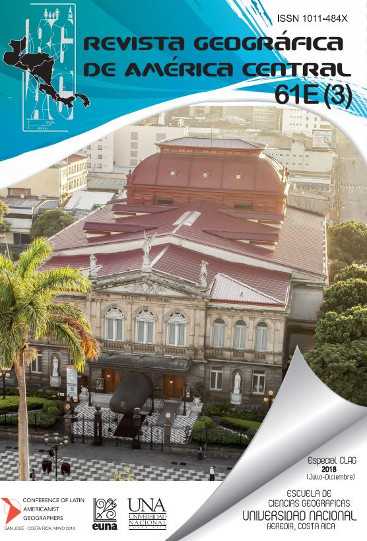Gendered economy in the Mosquitía: women’s roles in a changing indigenous economy
DOI:
https://doi.org/10.15359/rgac.61-3.7Keywords:
Miskitu, indigenous economy, autonomy, womenAbstract
This paper explores frst hand perceptions of Nicaraguan Miskitu women’s role in their local economy. Attention is paid to how economic practices have changed over time and whether change spurred by outside influences – such as corporate ventures and NGOs – have eroded the authenticity of an indigenous economy. Some historical economic practices are explored with a focus on the post-war economy and how political autonomy has affected women’s role. Surveys of Miskitu women obtained during feld research, with support from relevant literature, comprise the main source of information considered.
References
Cunningham Kain, R. (2011). The Grandmothers of the Wangki. In T. Foundation, Indigenous Women, Climate Change and Forests (pp. 3-40). Baguio City, Philippines: Tebtebba Foundation.
Cunningham, M. (2012). Knowing Mirna Cunningham. Retrieved from Mirna Cunningham: www.mirnacunningham.org
Escobar, A. (1995). Encountering Development: The Making and Unmaking of the Third World. Princeton: Princeton University Press.
Fenly, N., IIWF, & CADPI. (2011). Forests and Indigenous Women in Tuapi: "Return to Auhbi Piakan". In T. Foundation, Indigenous Women, Climate Change and Forests (pp. 41-74). Baguio City, Philippines: Tebtebba Foundation.
Helms, M. W. (1971). Asang: Adaptations to Culture Contact in a Miskito Community. Gainesville: University of Florida Press.
Henricksen, K., & Kindblad, C. (2011). Neoliberalism, Patriarchal Rule, and Cultural Change at the Turn of the Twentieth Century: The Case of Tasbapauni. In L. Baracco (Ed.), National Integration and Contested Autonomy: The Caribbean Coast of Nicaragua (pp. 191-220). New York: Algora Publishing.
Herlihy, L. H. (2006). Sexual Magic and Money: Miskitu Women's Strategies in Northern Honduras. Ethnology , 45 (2), 143-159.
Herlihy, L. H. (2012). The Mermaid & the Lobster Diver: Gender, Sexuality, and Money on the Miskito Coast. Albuquerque: University of New Mexico Press.
Nietschmann, B. (1973). Between Land and Water. New York: Seminar Press.Tebtebba Foundation. (2010). Towards an Alternative Development Paradigm: Indigenous
People's Self-Determined Development. (V. Tauli-Corpuz, & L. d. Enkiwe-Abayao, Eds.) Baguio City, Philippines: Tebtebba Foundation
Published
How to Cite
Issue
Section
License
Proposed policy for journals offering Open Access
Authors publishing their works in the Journal acknowledge and agree to the following terms:
a) Authors retain the copyrights to their works and guarantee the Journal the right to be the first to publish their works, under the Creative Commons License Attribution-NonCommercial-ShareAlike 4.0 International, CC BY-NC-SA 4.0 International (https://creativecommons.org/licenses/by-nc-sa/4.0/deed.es), which allows others to share works upon complying with the acknowledgment of authorship and mention of the Journal as the original publisher of the work.
b) Authors are permitted to separately establish additional agreements for the non-exclusive distribution of the official edition of the work published in the Journal (for example, authors may desire to place the work in an institutional repository or incorporate it into a book that is to published elsewhere) so long they acknowledgment to recognize the Journal as the original publisher. The aforementioned additional agreements must respect the terms of the non-profit character and sharing philosophy of the original license (CC BY-NC-SA 4.0 International, https://creativecommons.org/licenses/by-nc-sa/4.0/deed.es).
c) Authors are encouraged to archive the post-print or editor/PDF version in Open Access repositories.






 REVGEO is licensed under https://creativecommons.org/licenses/by-nc-sa/4.0/deed.es
REVGEO is licensed under https://creativecommons.org/licenses/by-nc-sa/4.0/deed.es
.svg_4.png)

_(1).png)
_(1)_(1)_(1)_1.png)
(2)(1)(1)(1).png)
